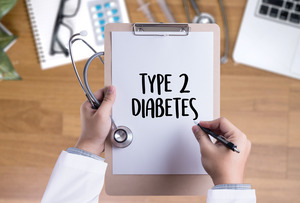The Unexpected Connection Between Type 2 Diabetes and Sleep Apnea
February 15, 2025

Sleep apnea and type 2 diabetes are already serious health threats on their own, but did you realize that they can actually be connected to each other? Studies show that more than half of patients with type 2 diabetes also suffer from sleep apnea. What is the reason for this relationship between these two seemingly unrelated conditions? Your dentist is here to explain.
How Does Sleep Apnea Affect the Body?
The key characteristic of sleep apnea is the repeated interruptions in breathing that you experience while you’re asleep. The lack of oxygen can force your brain to briefly wake your body up to get some air; if this happens multiple times during the night, it can prevent you from getting quality sleep, leaving you feeling exhausted during the day.
Moreover, interruptions in breathing caused by sleep apnea can easily lead to oxygen deprivation. This, in turn, can result in raised blood pressure and severe heart problems.
How Can Sleep Apnea Be Related to Type 2 Diabetes?
Research has shown that sleep apnea has the potential to make type 2 diabetes worse due to the negative impact it can have on blood sugar. One of the side effects of oxygen deprivation is that it can increase the body’s insulin resistance. This ultimately results in higher levels of glucose in the blood.
It should also be noted that sleep apnea and type 2 diabetes share obesity as a major risk factor. People who are overweight are more prone to having their breathing interrupted while they sleep due to the presence of fat deposits in the neck that can potentially block the airway. Furthermore, excess body fat is known to lead to insulin resistance.
What Can You Do About Sleep Apnea and Type 2 Diabetes?
If you want to keep your type 2 diabetes under control, you should have your sleep apnea treated as soon as possible. This is often done with the help of a CPAP machine, but many patients find this approach to be too noisy or uncomfortable. Fortunately, your dentist may be able to offer oral appliance therapy as an alternative. Simply wearing a personalized oral appliance can help you maintain a clear airway while you slumber, thus reducing sleep apnea symptoms.
Treating type 2 diabetes can involve changing your dietary habits, losing weight, exercising more, and taking certain types of medications. You will need to speak to your regular physician so that they can put together a treatment plan.
Ignoring sleep apnea or type 2 diabetes for too long can have dire consequences. As soon as you have reason to think you have either of these conditions, it’s essential to have them diagnosed as soon as possible so that you can get the treatment you need.
About the Author
Dr. David G. Banda went to the University of Michigan for his dental degree. He holds membership with the Michigan Dental Association and many other dental organizations. His Bloomfield Hills practice, Cranbrook Dental Care, offers oral appliance therapy as a treatment option for patients struggling with sleep apnea. To schedule a consultation with Dr. Banda, visit his website or call (248) 988-0030.
No Comments
No comments yet.
RSS feed for comments on this post.
Sorry, the comment form is closed at this time.










